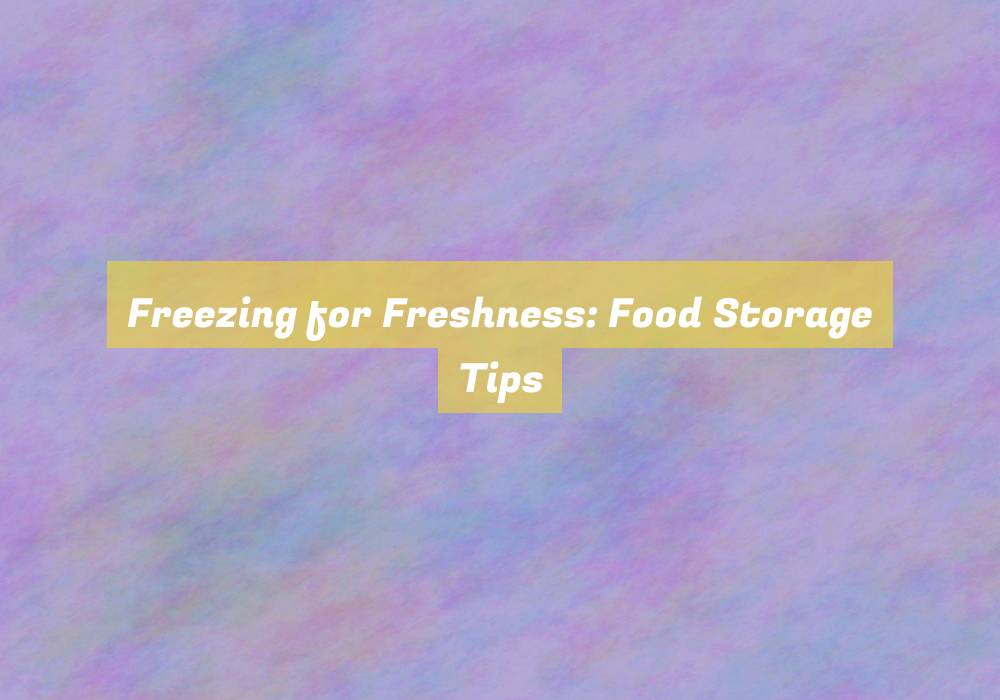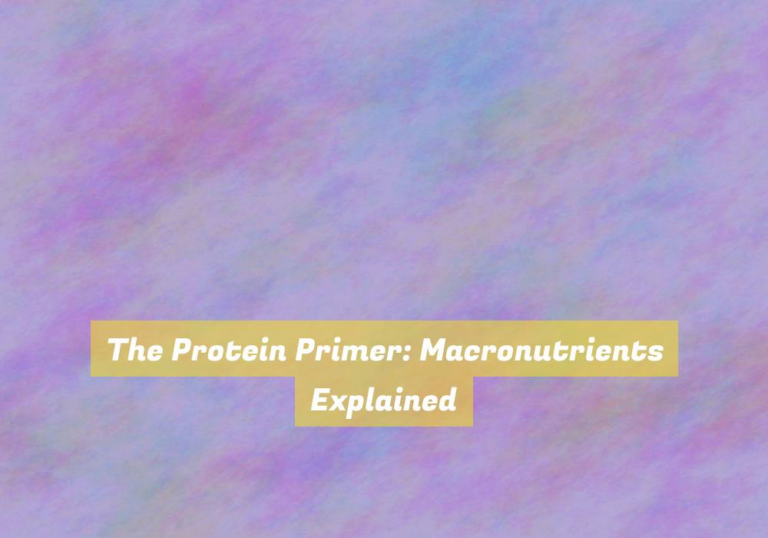Freezing for Freshness: Food Storage Tips
So, youG??ve always enjoyed finding that long-forgotten bag of freezer-burned peas at the back of your freezer, right? No?
Well, then itG??s time to master the art of freezing for freshness. From saving money to reducing food waste, there are numerous benefits to properly storing your food in the freezer.
But where do you start? Stay tuned to discover the best foods to freeze, proper freezing techniques, and how to maximize your freezer space for ultimate freshness.
Benefits of Freezing
Freezing your food can help extend its shelf life and preserve its nutritional value. When you freeze food, you slow down the growth of microorganisms that cause food spoilage, which means your food stays fresh for longer. This is especially useful for perishable items like meat, fish, and dairy products.
Freezing also helps to retain the nutritional value of your food. Unlike canning or other preservation methods that involve high heat, freezing preserves the vitamins and minerals in your food. This means that when you defrost and consume your frozen food, youG??re still getting all the essential nutrients it contains.
Additionally, freezing can save you time and money. You can prepare large batches of meals, freeze them in portions, and have ready-made meals on hand for busy days. This can prevent food waste and the need for last-minute takeout.
Best Foods to Freeze
Preserving the freshness and nutritional value of your food through freezing is particularly beneficial for certain types of foods.
Meats, such as beef, chicken, and fish, freeze exceptionally well and can maintain their quality for up to 12 months when properly stored.
Additionally, fruits like berries, bananas, and mango chunks are ideal for freezing. They can be used in smoothies, baking, or enjoyed as frozen treats.
Vegetables, such as peas, corn, and green beans, also freeze wonderfully and retain their essential nutrients.
Dairy products like cheese and butter can be frozen, but itG??s important to note that the texture may change, so itG??s best to use them in cooked dishes after freezing.
Breads and baked goods can also be frozen to extend their shelf life.
However, items with high water content, like lettuce and cucumbers, donG??t freeze well as they become limp and lose their crispness.
Proper Freezing Techniques
To ensure optimal results when freezing foods, itG??s crucial to follow proper techniques to maintain their quality and nutritional value. Start by preparing the foods for freezing. For fruits and vegetables, wash and dry them thoroughly. Then, for best results, consider using a vacuum sealer to remove excess air and prevent freezer burn. When freezing meats, wrap them tightly in plastic wrap or aluminum foil to minimize exposure to air. Label all containers and bags with the date and contents to keep track of freshness.
Next, make sure to arrange the food items in the freezer with enough space between them for efficient freezing. This helps the food freeze quickly, which can help preserve its texture and flavor. Additionally, organizing the freezer can make it easier to locate specific items when needed. Be mindful of the freezer temperature, which should be set at 0-?F (-18-?C) for optimal results.
Remember to thaw frozen foods safely in the refrigerator or using the defrost setting on the microwave. Avoid thawing at room temperature to prevent the growth of harmful bacteria.
Maximizing Freezer Space
Consider utilizing stackable or modular storage containers to maximize freezer space and keep items organized for easy access. These containers allow you to efficiently use the available space by stacking items vertically. Additionally, look for containers that are specifically designed for freezer use, as they can help prevent freezer burn and protect your food from damage.
Another way to maximize freezer space is by using vacuum-sealed bags. These bags remove excess air, shrinking the size of the items and creating more space in the freezer. TheyG??re particularly useful for storing meats, fruits, and vegetables.
Furthermore, consider investing in freezer shelves or sliding drawers to create additional layers of storage within the freezer. These shelves and drawers can help you maximize the use of vertical space and keep different types of items separate and organized.
Lastly, be mindful of how you arrange items in the freezer. Keep frequently used items within easy reach and group similar items together. This wonG??t only maximize space but also make it easier to locate specific items when needed.
Conclusion
So, remember to take advantage of the benefits of freezing to keep your food fresh for longer.
Properly freezing your food and maximizing your freezer space wonG??t only save you money, but also reduce food waste.
With these food storage tips, you can enjoy the convenience of having your favorite foods on hand whenever you need them.
Happy freezing!





I really appreciate this exploration of the art of freezing food and its benefits. It truly resonates with me because I’ve spent quite a bit of time experimenting in the kitchen to find ways to minimize waste and extend the lifecycle of ingredients. I’ve often marveled at how many people overlook the potential of their freezers, mostly treating them as a temporary resting place for leftovers or on-sale impulse buys.